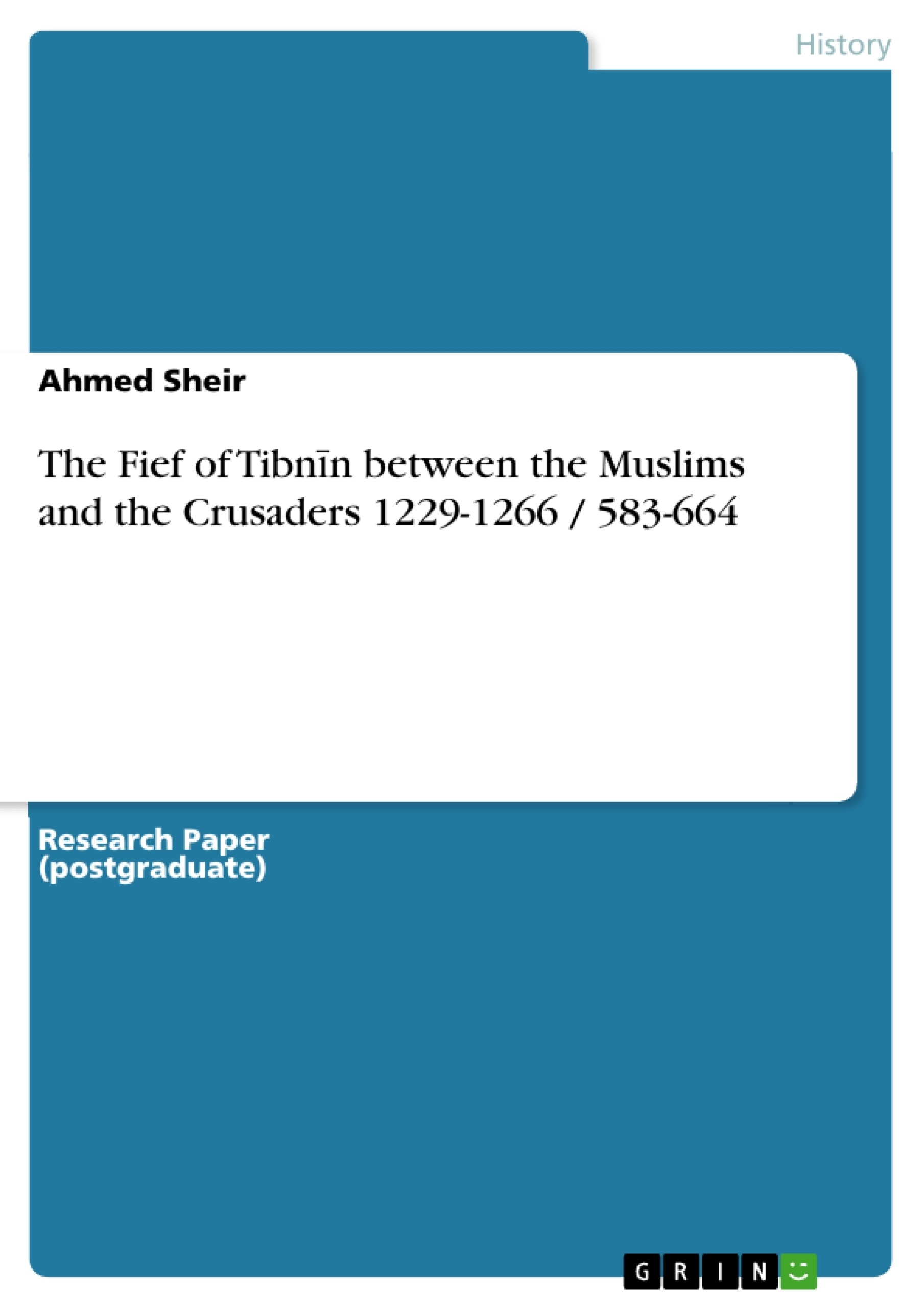This paper is a study of the political and military situation of Tibnīn under Muslim rule 1187-1229/ 583- 625 and Latin rule 1229-1266/ 625-664. The first part of this study studies Tibnīn under Ayyubid rule 1187-1229/ 583- 625. The German crusade 1197-98 against Tibnīn and the impact of the fifth crusade 1218-1221 on Tibnīn will be discussed as well. The second part of this paper deals with Tibnīn under the Crusader rule of 1229- 1266/ 625- 664. It will examine the issues involving the struggle for Tibnīn between the Teutonic Knights and Alice of Tibnīn in 1229. Additionally, the military and political role of Tibnīn and its rulers will be studied.
Inhaltsverzeichnis (Table of Contents)
- Tibnīn under the Ayyubid Rule 1187-1229/583-625
- German Crusade of 1197-98 and the siege of Tibnin
- Tibnīn under the Crusader rule of 1229- 1266/ 625-664
Zielsetzung und Themenschwerpunkte (Objectives and Key Themes)
This chapter explores the political and military situation of Tibnīn, a castle in Southern Lebanon, during both Muslim and Latin rule. The first section examines Tibnīn's history under the Ayyubid dynasty (1187-1229), including the impact of the German Crusade (1197-98) and the Fifth Crusade (1218-1221). The second section focuses on Tibnīn under Crusader rule (1229-1266), analyzing the struggle for control between the Teutonic Knights and Alice of Tibnīn, and the castle's military and political role. Key themes of this chapter include:- Tibnīn's strategic importance during the Crusades
- The role of Tibnīn in military operations against the Crusaders
- The impact of the German Crusade on Tibnīn
- The struggle for control of Tibnīn between the Teutonic Knights and Alice of Tibnīn
- The castle's political and military significance under Crusader rule
Zusammenfassung der Kapitel (Chapter Summaries)
Tibnīn under the Ayyubid Rule 1187-1229/583-625
The chapter begins by outlining the recapture of Tibnīn by the Muslims in 1187. The role of Tibnīn as a strategic location for Muslim forces is highlighted, particularly in their operations against the Crusaders at Tyre. The chapter then discusses the German Crusade of 1197-98 and its siege of Tibnīn, eventually resulting in the surrender of the castle.German Crusade of 1197-98 and the siege of Tibnin
The chapter delves into the arrival of the German Crusade in the Levant in 1197. It discusses the capture of Jaffa by al-Adil and the subsequent siege of Tibnīn by the German and Crusader forces. The siege, despite initial resistance, ends with the surrender of Tibnīn in return for the safety of the Muslim population.Schlüsselwörter (Keywords)
This chapter focuses on the historical context of Tibnīn in the Crusades, examining key figures such as Ṣalaḥ al-Dīn, the Teutonic Knights, and Alice of Tibnīn. It explores themes of strategic importance, military operations, and political power dynamics. Key terms include Crusades, Latin East, Tibnīn, German Crusade, Teutonic Knights, Muslims, Ayyubid, Frederick II, and Philip of Montfort.
Ende der Leseprobe aus 24 Seiten
- nach oben
- Arbeit zitieren
- Ahmed Sheir (Autor:in), 2014, The Fief of Tibnīn between the Muslims and the Crusaders 1229-1266 / 583-664, München, GRIN Verlag, https://www.grin.com/document/276350
Blick ins Buch



